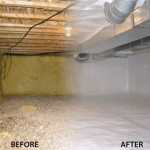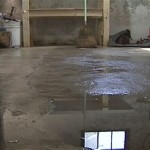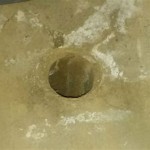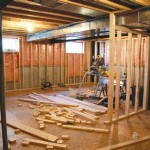Faced vs. Unfaced Insulation for Basements: Key Considerations
Insulating your basement is crucial for maintaining a comfortable indoor environment, reducing energy costs, and preventing moisture issues. When selecting insulation for your basement, you will encounter two main options: faced and unfaced. Understanding the differences between these types of insulation is essential for making an informed decision.
Faced Insulation
Faced insulation is covered with a material such as paper, foil, or plastic. This facing serves several purposes:
- Vapor barrier: The facing acts as a vapor barrier, preventing moisture from penetrating the insulation and causing condensation.
- Pest resistance: Some facings can deter pests from nesting or tunneling in the insulation.
- Easier installation: The facing makes the insulation easier to handle and install, especially when working with overhead surfaces.
Unfaced Insulation
Unfaced insulation lacks any covering material. It is typically less expensive than faced insulation, but it requires additional steps during installation.
- Vapor barrier: A separate vapor barrier must be installed over unfaced insulation to prevent moisture accumulation.
- Increased handling care: Unfaced insulation can be more difficult to work with and may require additional support during installation.
- Potential for pest infestation: Without a facing, unfaced insulation is more susceptible to pest problems.
Which Type is Right for Your Basement?
The best type of insulation for your basement depends on your specific needs and budget. Here are some factors to consider:
- Moisture concerns: If your basement is prone to moisture or flooding, faced insulation with a vapor barrier is a better choice.
- Budget: Unfaced insulation is typically more affordable, but it may require additional materials and labor costs for vapor barrier installation.
- Pest potential: If there is a risk of pest infestation, faced insulation with a pest-resistant material is recommended.
- Installation space: If you have limited headroom or accessibility, faced insulation with its easier installation process may be preferable.
Additional Considerations
R-value: Both faced and unfaced insulation are available in different R-values, which measure thermal resistance. Higher R-values indicate better insulation properties. Choose an R-value appropriate for your climate and energy efficiency goals.
Installation: Proper installation is crucial for the effectiveness of any insulation. Ensure the insulation is cut and fitted precisely and any seams are sealed properly.
Conclusion
Faced and unfaced insulation each have their advantages and disadvantages. Faced insulation offers a vapor barrier, pest resistance, and easier installation, while unfaced insulation is less expensive. By considering your specific needs, budget, and installation considerations, you can choose the best insulation type for your basement and create a more comfortable, energy-efficient, and moisture-resistant living space.

Faced Vs Unfaced Insulation Bob Vila

Unfaced Vs Kraft Faced Insulation What S The Difference Johns Manville

Unfaced Vs Kraft Faced Insulation What S The Difference Johns Manville

Faced Vs Unfaced Insulation The Constructor

Faced Vs Unfaced Insulation Bob Vila

Faced Vs Unfaced Insulation

Finishing A Basement Day 4 Insulation

What S The Difference Between Faced Vs Unfaced Insulation

When To Use Faced Or Unfaced Insulation Youtube

How To Insulate Basement Walls True Value
Related Posts







